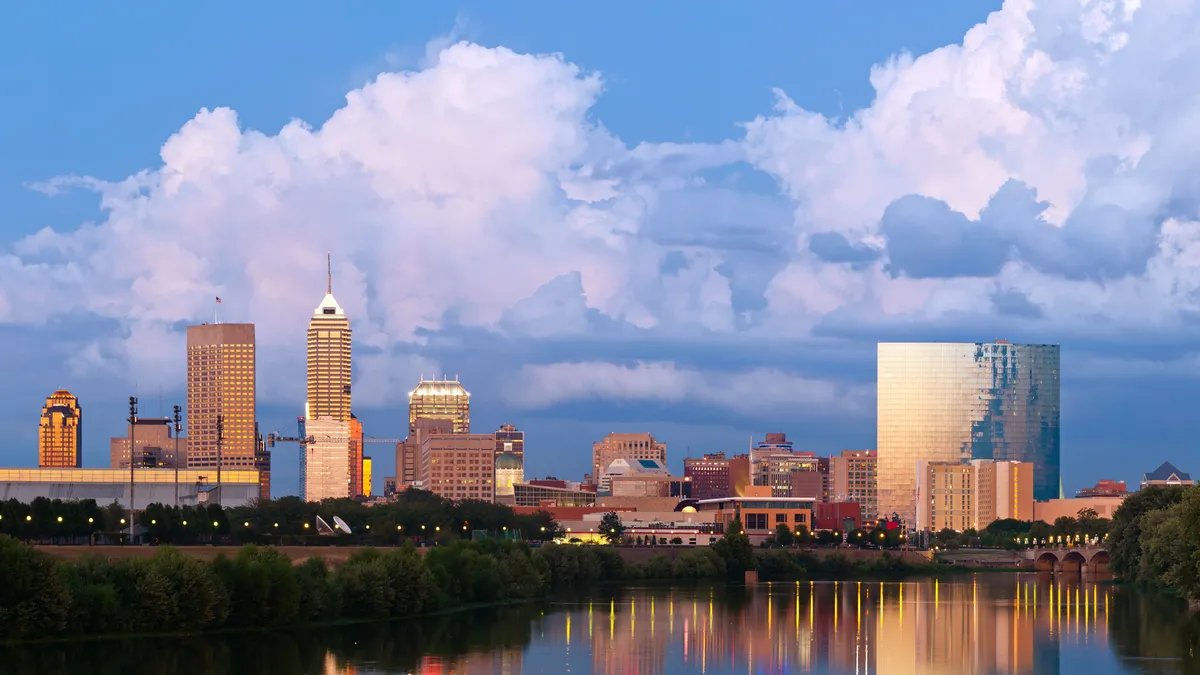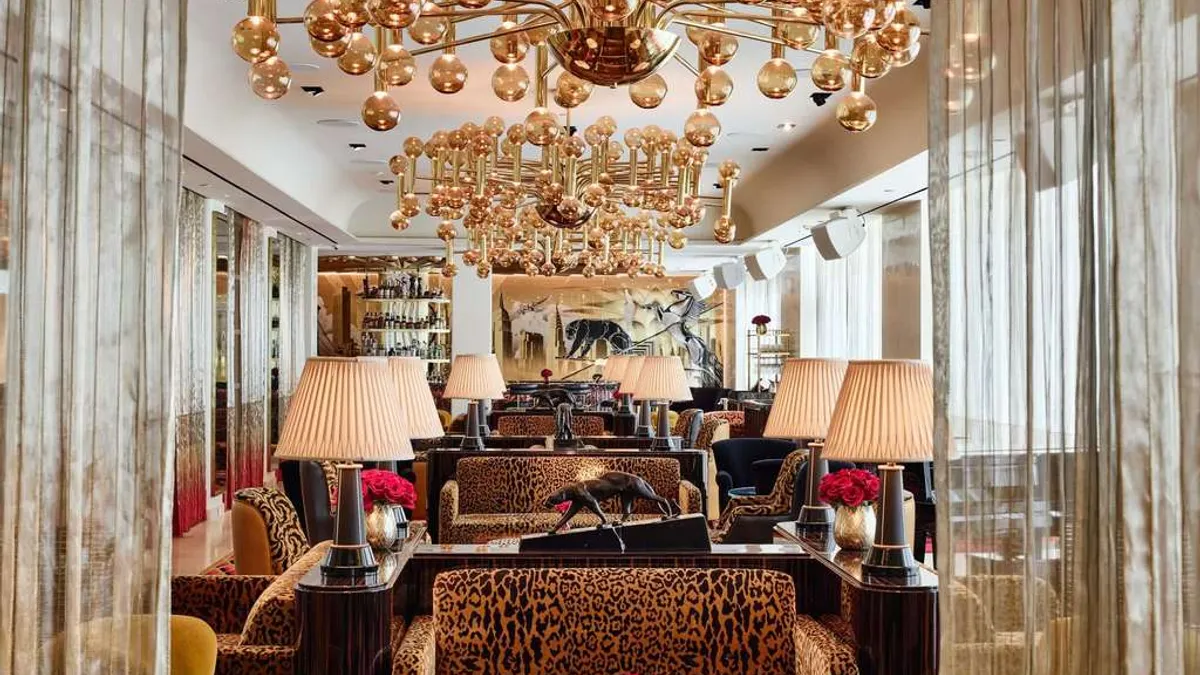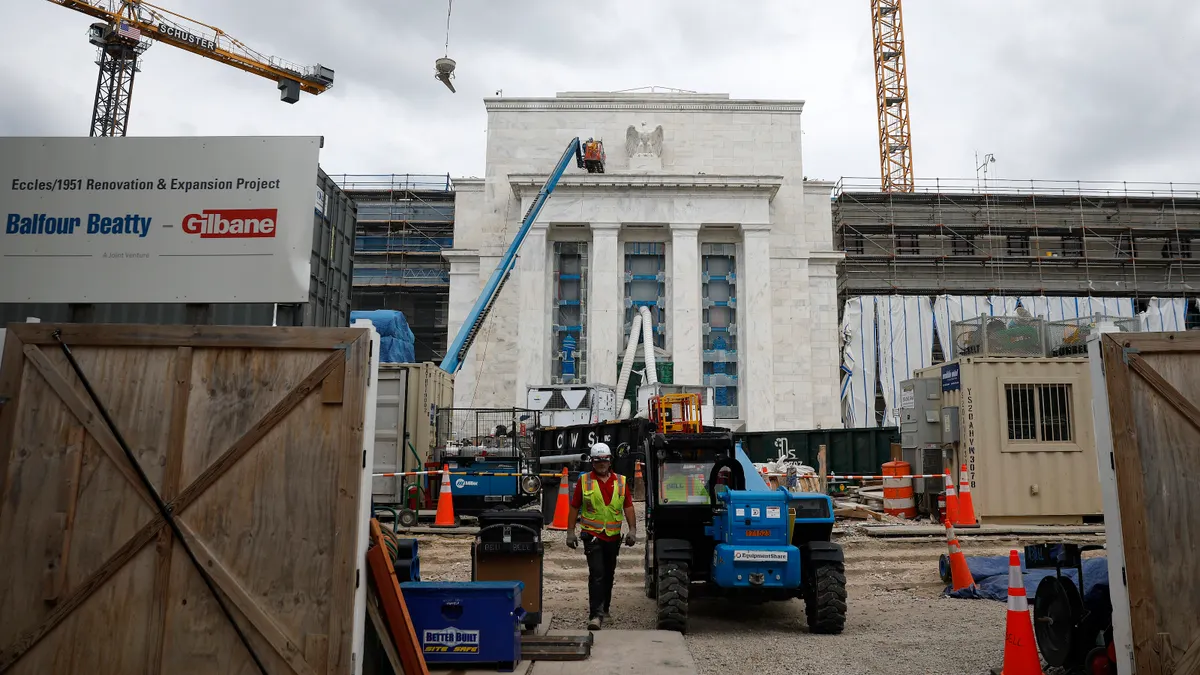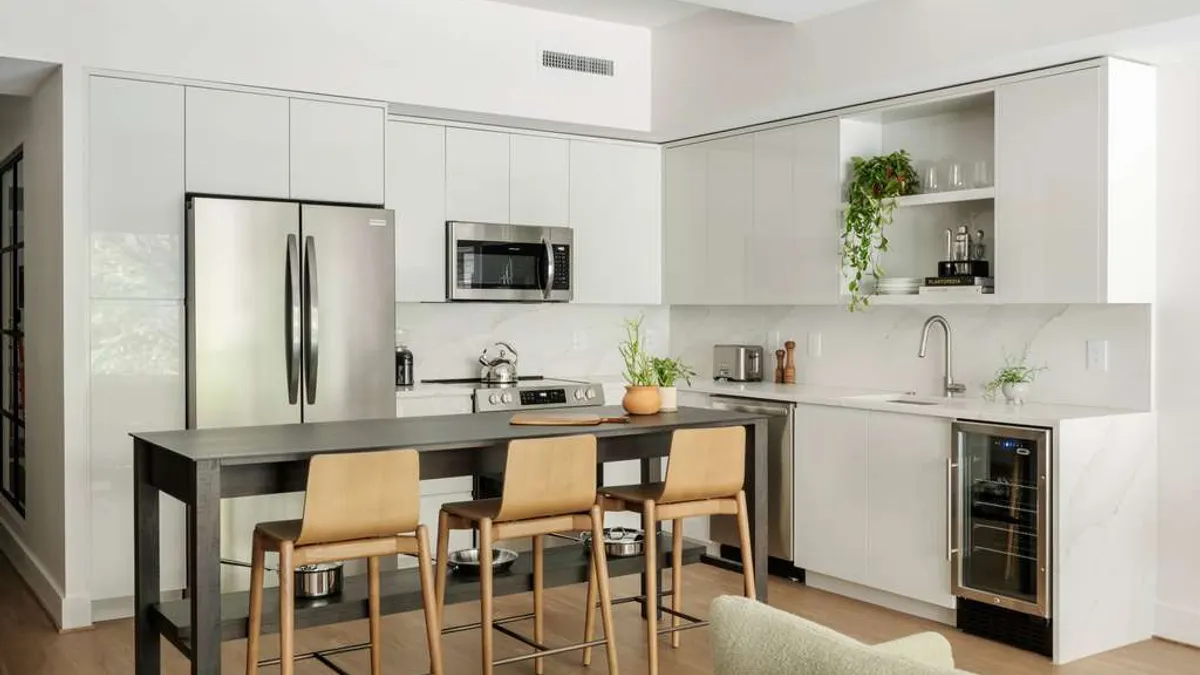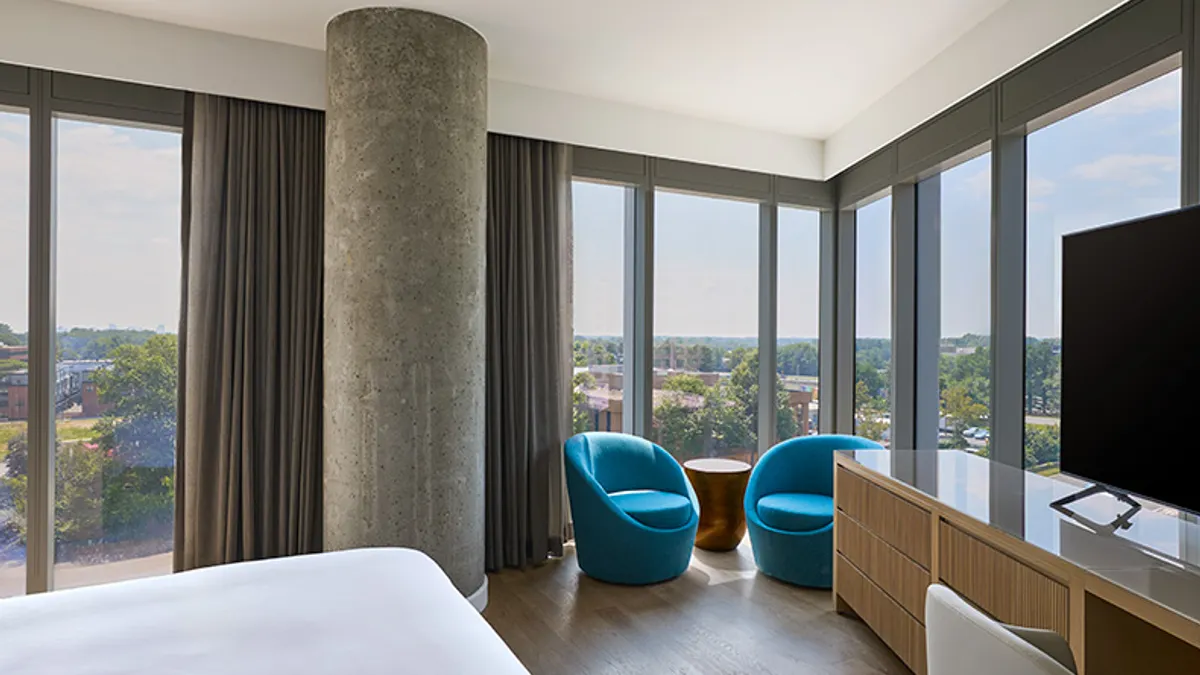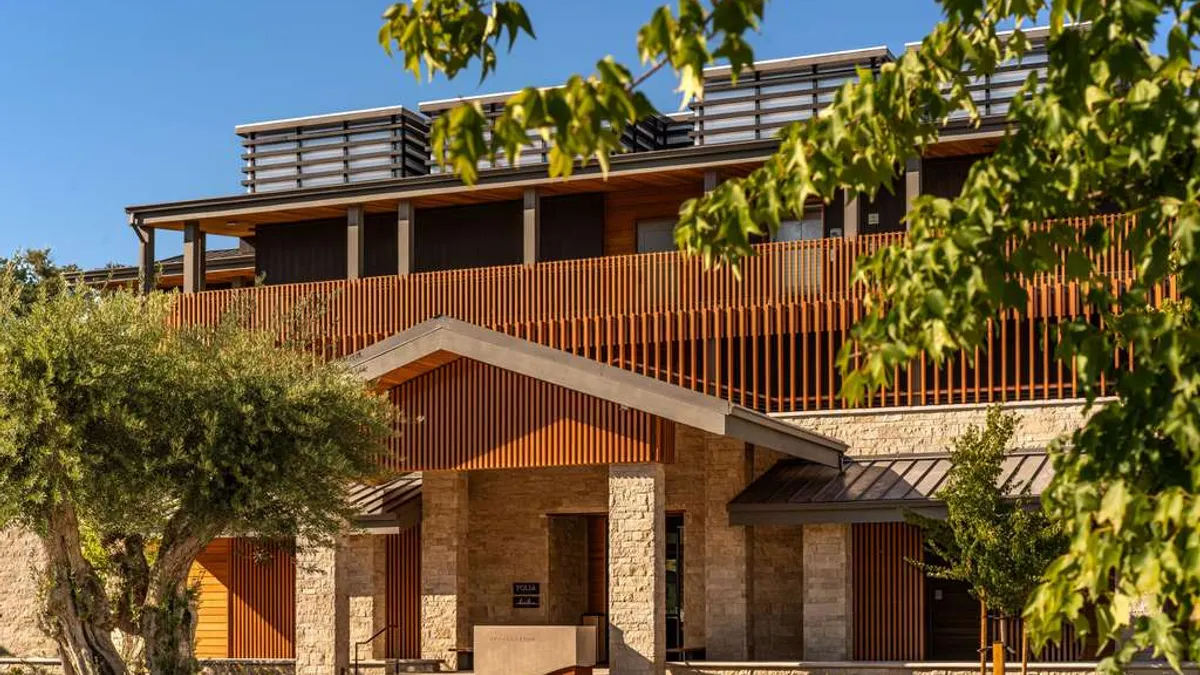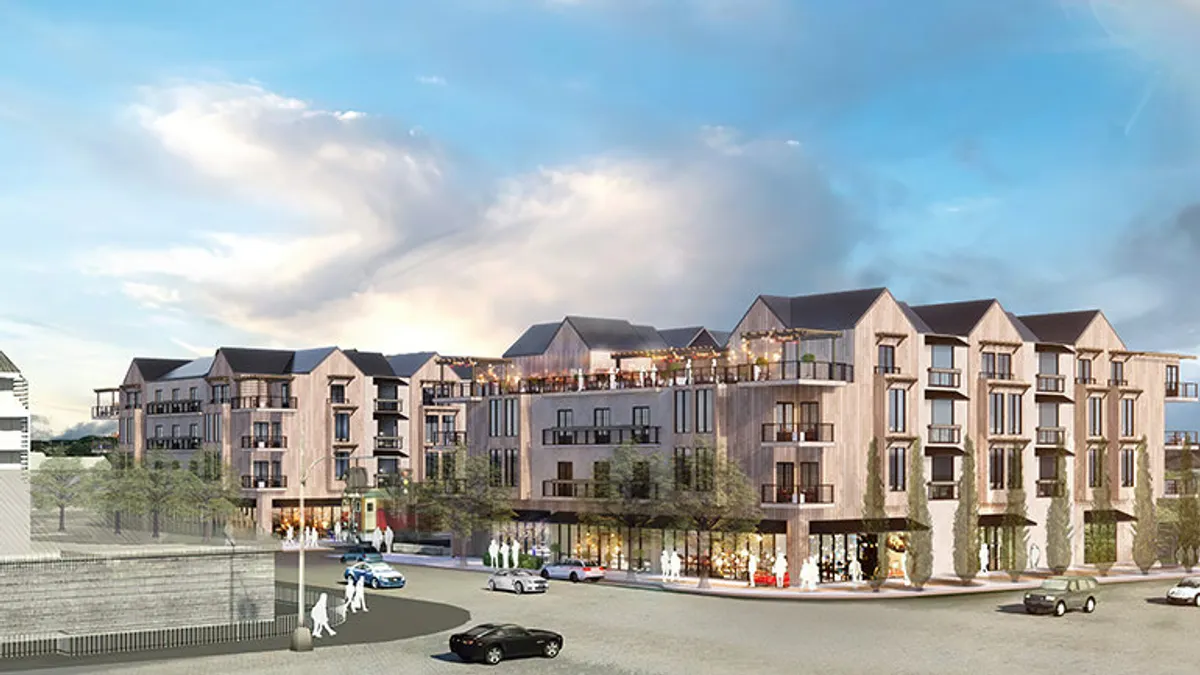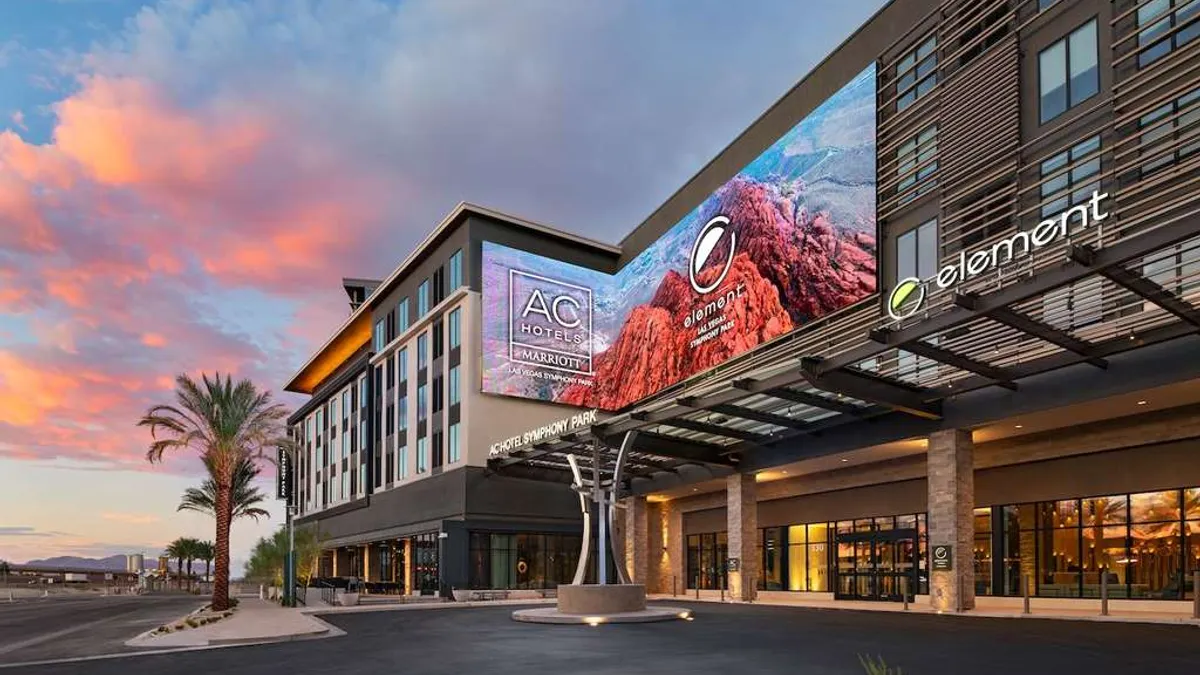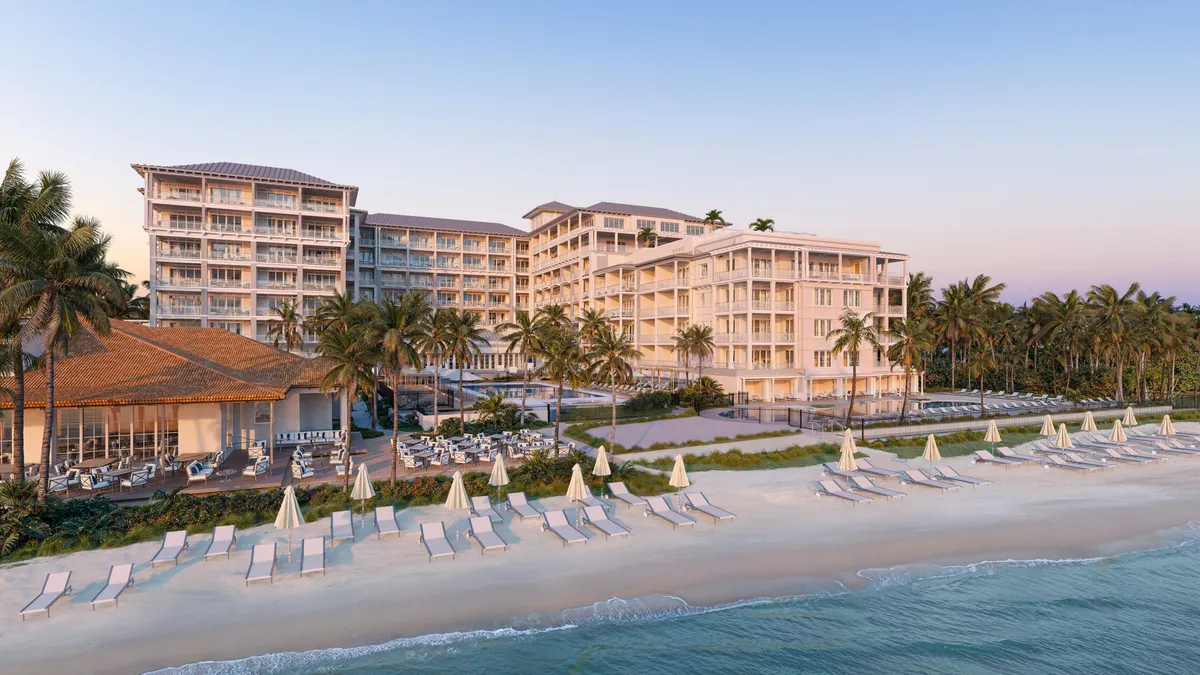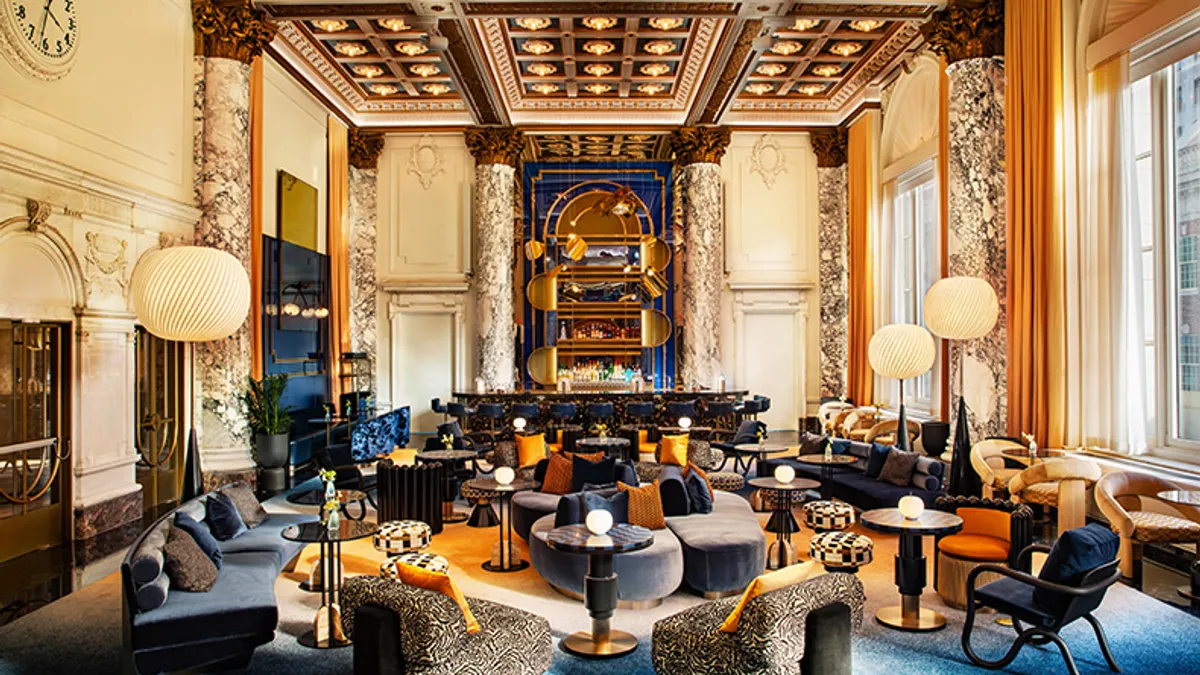In 2023, Hilton announced plans to open an 800-room luxury Signia hotel — the brand’s second ground-up build ever — in downtown Indianapolis. When it opens next year, the hotel will be a game-changer for the Midwestern Indiana city.
“We'll be the tallest hotel in Indianapolis,” Signia by Hilton Indianapolis General Manager Kathy Heneghan told Hotel Dive. “Everyone is pretty amazed at how it's changing the view of the skyline in Indianapolis.”
But the new hotel — which connects to the city’s Indiana Convention Center by skywalk — will impact more than the skyline.
“It’s the classic tide that raises all ships,” Leonard Hoops, president and CEO of destination management organization Visit Indy, told Hotel Dive. When the Signia hotel opens, Hoops said, Indianapolis will be able to host more citywide conventions, putting Indianapolis’ events market on par with major cities like Chicago.
While Signia is the largest hotel under construction in Indianapolis, it’s part of a broader wave of hotel development in the city, which is attracting larger and higher-end projects as demand for business travel and large-scale events rises, experts shared.
Hotel Dive spoke with city hospitality and tourism professionals about what’s driving the development surge, which cities Indianapolis competes with and how the destination plans to add more inbound leisure travelers into the mix.
Convention demand
Indianapolis, which has a metro-area population of approximately 2.1 million, “is just exploding,” said Heneghan.
Much of that explosion is due to convention demand, which led to 932,000 hotel room nights booked in 2024, according to Visit Indy.
Of Indianapolis’ top 10 days for hotel demand ever, nine were in 2024, thanks in part to events like the solar eclipse and Taylor Swift’s Eras Tour. Out of all U.S. markets in the path of totality, Indianapolis saw the greatest year-over-year RevPAR increase (up 660%) from the eclipse, according to STR.
In its initial announcement of the Signia, Hilton called Indianapolis “one of the United States’ highly acclaimed convention cities.”
Adding the Signia hotel and its 90,000 square feet of meeting space — including a 50,000-square-foot ballroom, which will be the largest in Indiana — will allow Visit Indy to host two citywide events at once, Heneghan said.
“Whereas now, there's only the ability to host one [citywide convention],” she noted. “This hotel and the meeting space that it brings is going to elevate the level of business that we can do in the city.
“Meeting planners are incredibly excited to see that there is this level of luxury that's attached to a convention center,” she added.
"There's a lot of developers who are pretty bullish about the Indy market moving forward, and so we aim to prove them to be smart about their investments.”

Leonard Hoops
president and CEO of Visit Indy
While additional hotel projects are underway, the Signia stands out because it “will bring new business to Indianapolis,” Hoops noted. But it’s taken a long time to get here, he added.
After Visit Indy advocated for the Signia project, “we pretty much stopped advocating [for additional hotels] because that's a lot of rooms of inventory to add,” Hoops said. “But there's a lot of developers who are doing these things on their own, who are pretty bullish about the Indy market moving forward, and so we aim to prove them to be smart about their investments.”
Ongoing development
One of those developers is Ersal Ozdemir, the founder and owner of Keystone Group, which opened the InterContinental Indianapolis in February after a $120 million restoration of a historic downtown building.
The 170-room luxury hotel features 5,000 square feet of meetings and events space, including a 2,500-square-foot ballroom.
“Our goal is that we not only want to develop great buildings, but we want to help to elevate the city,” Ozdemir told Hotel Dive. For Keystone Group, that meant spending more than anticipated to create a rooftop bar, which has already hosted elite gatherings for events travelers, Ozdemir shared.
“We're seeing a lot more interest in that upper-upscale, boutique side,” said Hoops. Other hotels under construction downtown include a Kimpton — which, like InterContinental, is part of IHG Hotels & Resorts’ growing luxury and lifestyle portfolio — and the Shinola Hotel, a project from Detroit-based luxury design brand Shinola. Meanwhile, Ennismore plans to open a 21c Museum Hotel in a historic city hall building in 2028, inclusive of the art-focused hotel brand’s largest-ever gallery space.
Outside of downtown, Marriott International’s Westin brand broke ground last month on a $205.8 million hotel at Indianapolis International Airport.
Existing hotels are getting upgrades, too: Omni Severin Hotel recently underwent a $24 million renovation, and both the JW Marriott Indianapolis and Crowne Plaza Indianapolis recently unveiled the results of their $15 million revamps, according to Visit Indy.
“We not only want to develop great buildings, but we want to help to elevate the city.”

Ersal Ozdemir
founder and owner, Keystone Group
According to Ozdemir, the difference between downtown Indianapolis now and 20 years ago is like “day and night.”
“I've not been to another city that has so many hotels either built or getting ready to be built within walking distance,” he said.
The city’s walkability is a big selling point for its hotels, according to Visit Indy. Indianapolis was designed by Alexander Ralston, an apprentice of Pierre Charles L’Enfant, who designed Washington, D.C. The city’s layout, then, is not dissimilar from the capital’s, Hoops said. Like D.C., many of Indianapolis’ streets are named after states, and a Monument Circle in the city center features roads spiking out in diagonals.
Heneghan said she notes the city’s walkability when speaking to event planners. “Everything is connected,” she said.
Future projects
In terms of citywide conventions, Hoops said, Indianapolis rivals the best. “We compete absolutely nationally,” he said. “We go up against Orlando, New Orleans, Atlanta, Chicago.”
The next step is building a leisure travel segment that matches, he noted, adding that Indianapolis is looking to Austin, Texas, and Nashville, Tennessee, for inspiration.
“We're just a little bit behind where Austin was, and where Nashville was, a few years ago,” he said.
Both of those cities, however, are known for their music scenes — something Indianapolis hopes to beef up with its forthcoming 4,000-seat music venue by Live Nation Entertainment. At the same time, Visit Indy plans on creating more activations around the White River, which flows through downtown.
Meanwhile, sports tourism — such as the recent WNBA All-Star Game — continues to drive leisure travelers to the city.
"People kind of sleep on Indianapolis, but I remind them that Paris is a flat city with a river, and so is Indianapolis,” Hoops said. “Their only advantage is a 2,000-year headstart.”



